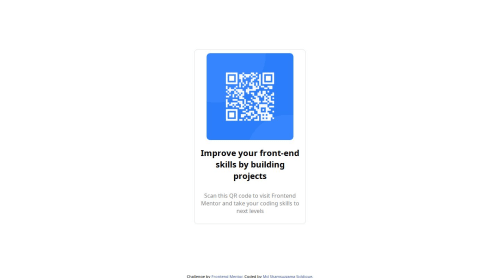
Solution retrospective
I'm proud of the following aspects of the QR code component solution:
Beginner-Friendly Approach: The solution uses basic HTML, CSS, and optional JavaScript, making it accessible for those new to web development. Clear Breakdown: The code is well-structured and explained, allowing users to follow along and understand each step. Customization Potential: The solution emphasizes the ability to customize colors, fonts, and even add interactivity, providing flexibility for different project needs. Comprehensive Resources: The inclusion of a README.md file with instructions, resources, and customization tips enhances the overall user experience. Here's what I would do differently next time:
Error Handling: The current code assumes the image path is valid. Implementing error handling (checking for invalid paths and providing a fallback) would make the component more robust. Accessibility Features: Adding an alt attribute to the image element would improve accessibility for screen readers and users with visual impairments. Responsiveness Considerations: While the focus is on a static layout, discussing how to make the component responsive for different screen sizes is valuable. Potential solutions like media queries in CSS could be mentioned. Testing and Validation: Emphasizing the importance of testing across various browsers and devices would ensure consistent functionality. Community Engagement: Encouraging users to share their code on platforms like GitHub or CodePen could foster collaboration and feedback from the development community.
What challenges did you encounter, and how did you overcome them?No i didn't encounter any challenge.
What specific areas of your project would you like help with?I do many type of this project so it is easy for me.
Please log in to post a comment
Log in with GitHubCommunity feedback
No feedback yet. Be the first to give feedback on Md Shamsuzzama Siddique's solution.
Join our Discord community
Join thousands of Frontend Mentor community members taking the challenges, sharing resources, helping each other, and chatting about all things front-end!
Join our Discord